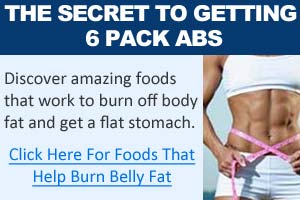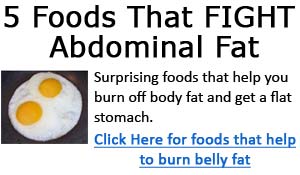Muscle tissue is metabolically active, so it requires calories even when at rest. Muscle tissue also helps increase the number of fat-burning enzymes and organelles in your body.
2. Supplement With Healthy Fats
Healthy fats are involved in the manufacture of hormones and repair of cell membranes in your body. With the right types of fats, your body can use these anabolically.
These processes require energy, so the fats may actually increase your metabolism despite the added calories you are consuming! You can add fats to your diet without increasing calories simply by increasing the percentage of calories from fats and then lowering the percentage of calories from carbohydrates or proteins.
3. Every Little Bit Counts
Believe it or not, simply changing some simple daily habits can have a huge impact on your metabolism. Do you play the game of driving around the parking lot for twenty minutes waiting for the perfect space to open? Instead, park at the edge of the parking lot and walk to your destination.
You'll probably get there quicker, and burn some calories
along the way. Other metabolism-boosting activities include
standing instead of sitting, taking stairs instead of elevators,
and even fidgeting!
4. Don't Fear Carbohydrates
Carbohydrates are not the enemy. Using the right types of carbohydrates can be a valuable tool for your metabolism.
 For example, you may expend more calories consuming 20
grams of carbohydrate from lentils than 20 grams of carbohydrate
from sugar. The lentils contain fiber and other nutrients
that the body must work to extract, and therefore expends
more energy. Look for fibrous, low-glycemic carbs and focus
on unprocessed carbohydrates.
For example, you may expend more calories consuming 20
grams of carbohydrate from lentils than 20 grams of carbohydrate
from sugar. The lentils contain fiber and other nutrients
that the body must work to extract, and therefore expends
more energy. Look for fibrous, low-glycemic carbs and focus
on unprocessed carbohydrates.
5. Fluctuate Calories
Zigzagging calories is by far one of the most effective methods for keeping your metabolism revved. Homeostasis is the action your body takes to "remain stable." In other words, if you drop your calories, your body will try to slow your metabolism in order to keep things the same.
By zigzagging calories, you may be able to thwart this mechanism. Some people zigzag day by day - for example, if their target is 2000 calories, they'll consume 1800 one day and 2200 the next. I prefer to consume low calories for a week or two, and then raise calories for a week, and then drop them again.
6. Increase Protein
Protein requires a complex chemical conversion by your body in order to be used as fuel. It takes up to 30% of the calories you consume to oxidize or use protein for energy.
For example, 100 calories of protein may take up to 30 calories to process. Therefore, increasing the percentage of calories in your diet that come from protein may help raise your metabolism.
7. Perform High Intensity Cardio
High intensity cardio, like weight training, takes you into the anaerobic zone of training. This, in turn, creates what is known as "oxygen debt." Even when you have concluded your exercise, the body is processing waste and recovering from the activity - and therefore keeping your metabolism elevated.
8. Increase Frequency Of Eating
Most bodybuilders are aware of this technique. Consuming food triggers digestion, and digestion requires calories. By eating more frequent, smaller meals, you continuously supply your body with nutrients while forcing it to digest and break down the foods. This, in turn, can have the net effect of raising your metabolism.
9. Eat Whole Foods
The calories that you burn during digestion are due to the need for your body to break down the foods. Your body must extract the fiber and nutrients, take chains of molecules and chop them into smaller versions to absorb them into your bloodstream, and perform a variety of tasks in order to assimilate foods.
When foods are processed, much of this work is done for you. For example, processed flour is ground into small pieces that the body can digest more quickly. This means your blood sugar rises faster and your body expends fewer calories processing the flour.
Whole grains, on the other hand, pack more nutrients, are higher in fiber, and force the body to work harder to use them as energy. Another advantage to eating whole foods is that many of the nutrients in these foods - such as vitamins and minerals - are cofactors in metabolic processes that your body uses to burn fat and build muscle.
10. Drink Cold Water
This tip is probably overrated. Your body will expend more calories trying to raise cold water to the temperature of your body, but the exact amount is debatable. It stands to reason, however, that integrating this habit with the other habits listed above can contribute to the greater goal of raising your metabolism.
Conclusion
These are just a few habits you can embrace to start revving your metabolism right away. You may have heard stories about people who have lost dozens of pounds simply switching to diet soda or walking a few minutes each day. These are all small habits that contribute to a big difference over time.
>> Click here for Tom Venuto's Burn the Fat Feed the Muscle program (a must have for anyone serious about losing body fat and getting fit!)

 It only takes a few key habits to raise your metabolism.
There is no magic pill required. You don't have to put heavy
spices on all of your foods or run in circles all day long,
either. This article shares ten strategies to keep that
metabolism elevated.
It only takes a few key habits to raise your metabolism.
There is no magic pill required. You don't have to put heavy
spices on all of your foods or run in circles all day long,
either. This article shares ten strategies to keep that
metabolism elevated.